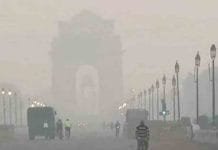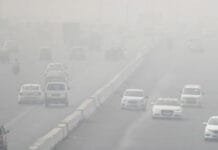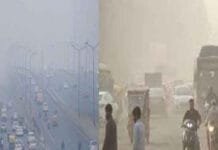The intense heat wave currently sweeping across North-West India is causing significant distress in several states, including Delhi, Uttar Pradesh (UP), Bihar, Haryana, and Punjab. As the mercury climbs beyond 45 degrees Celsius, the populace is bracing for continued extreme conditions. Despite the harsh weather, a glimmer of hope is forecasted with the possibility of light rain within the next 48 hours.
Record Temperatures and Heat Wave Conditions
On Sunday, the temperature in Delhi soared to an alarming 44.9 degrees Celsius, marking a deviation of six degrees above the norm. The situation in UP was even more dire, with maximum temperatures in many regions surpassing 45 degrees Celsius. This relentless heat wave is not limited to these areas but extends across a broad swath of North-West India, affecting millions.
Impact on Major States
The Indian Meteorological Department (IMD) has issued a forecast indicating that the severe heat will persist in Punjab, Haryana, Chandigarh, and Delhi until June 17. UP is expected to endure similar conditions until June 18. The next couple of days will see continued high temperatures in Jammu, Himachal Pradesh, North Rajasthan, Uttarakhand, Madhya Pradesh, and Chhattisgarh. During this period, there is no anticipated relief from the oppressive night-time temperatures in Punjab, Haryana, Chandigarh, and Uttar Pradesh.
Heavy Rain Predicted in the Northeast
Contrasting the severe heat in the northwest, the northeast of India is preparing for heavy rainfall. According to the IMD, two active cyclonic circulations over Northeast Assam and Sub-Himalayan West Bengal are expected to bring substantial rainfall over the next five days. Assam, Meghalaya, and Arunachal Pradesh are likely to experience heavy showers accompanied by winds blowing at 30-40 km per hour along with thunder and lightning.
Top 10 Hottest Cities in Uttar Pradesh
The scorching heat wave has particularly impacted several cities in Uttar Pradesh, where temperatures have exceeded 46 degrees Celsius. Here are the ten hottest cities:
- Prayagraj – 47.6°C
- Jhansi – 47.1°C
- Kanpur – 46.8°C
- Varanasi – 46.8°C
- Agra – 46.5°C
- Sultanpur – 46.4°C
- Fatehpur – 46.2°C
- Hamirpur – 46.2°C
- Barabanki – 46.0°C
- Raebareli – 46.0°C
Punjab’s Soaring Temperatures
Punjab is also experiencing unprecedented heat, with three cities recording temperatures above 46 degrees Celsius. Notably, Samrala recorded a searing 47.2 degrees Celsius, showcasing the widespread impact of the heat wave.
Anticipated Weather Relief
While the current weather patterns show no immediate respite from the heat, the IMD’s forecast suggests that light rain may bring some relief after two days. The expected precipitation might lower the temperatures slightly and provide a much-needed break from the relentless heat.
Extended Heat Wave Impacts
The prolonged heat wave has several cascading effects on daily life, health, agriculture, and infrastructure:
- Health Risks: Prolonged exposure to high temperatures increases the risk of heatstroke, dehydration, and other heat-related illnesses. Vulnerable populations, including the elderly, children, and those with pre-existing health conditions, are particularly at risk.
- Agricultural Stress: The heat wave adversely impacts crops, leading to reduced agricultural yield and increased water demand for irrigation. Farmers are struggling to protect their produce from the harsh weather.
- Water Scarcity: The demand for water spikes during heat waves, exacerbating water scarcity in already drought-prone areas. This situation stresses municipal water supplies and impacts daily activities.
- Energy Consumption: The use of air conditioners and coolers skyrockets during such periods, leading to increased energy consumption. This surge can strain power grids and lead to outages.
Precautionary Measures
Amidst the severe heat wave, it is crucial for residents to take precautionary measures to mitigate health risks:
- Stay Hydrated: Drink plenty of water and avoid beverages that can cause dehydration, such as alcohol and caffeinated drinks.
- Avoid Direct Sunlight: Limit exposure to direct sunlight, especially during peak hours (10 AM to 4 PM). If you must go outside, wear loose, light-colored clothing, and use a wide-brimmed hat or umbrella.
- Use Sunscreen: Apply broad-spectrum sunscreen with an SPF of at least 30 to protect your skin from harmful UV rays.
- Stay Indoors: Utilize fans, air conditioners, and coolers to maintain a comfortable indoor temperature. Ensure that living spaces are well-ventilated.
- Monitor Vulnerable Individuals: Keep an eye on children, the elderly, and those with pre-existing conditions, ensuring they are well-hydrated and comfortable.
Future Outlook
While the immediate forecast offers a brief respite, it is essential to consider the broader implications of such extreme weather events. Climate change is contributing to the increased frequency and intensity of heat waves. Long-term strategies to mitigate these impacts include:
- Urban Planning: Developing green spaces, improving building designs to enhance natural cooling, and implementing heat-resistant infrastructure.
- Agricultural Practices: Adopting climate-resilient farming techniques and drought-resistant crop varieties to sustain agricultural productivity.
- Water Management: Enhancing water conservation practices and developing efficient water distribution systems to ensure adequate supply during peak demand periods.
- Public Awareness: Increasing awareness about the health risks associated with heat waves and promoting community preparedness and response strategies.
As we navigate through these challenging times, it is imperative to stay informed and take proactive steps to safeguard our health and well-being. The resilience and adaptability of our communities will play a pivotal role in overcoming the adversities posed by severe heat waves.















